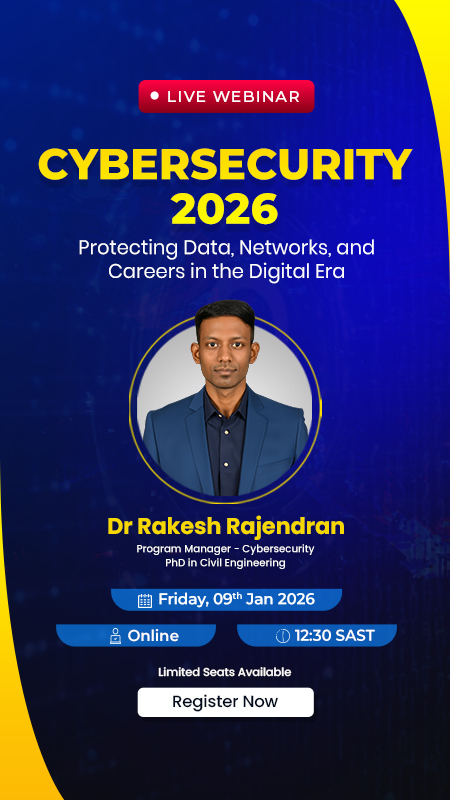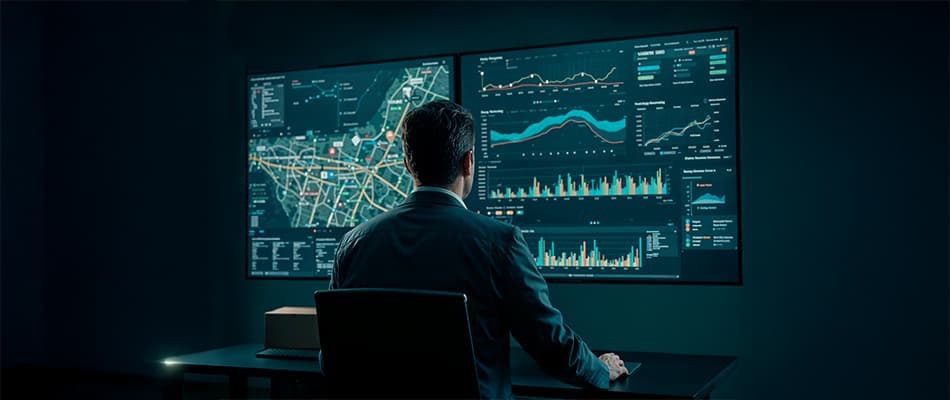40 Most Relevant Software Project Manager Interview Questions & Answers
Interviewing for the Software Project Manager role requires technical knowledge, leadership capabilities, and a deep understanding of project management methodologies. As the individual responsible for steering projects from inception to completion, a Software Project Manager must be able to manage timelines, resources, and team dynamics while ensuring the successful delivery of software solutions that meet business objectives. Interview questions for this role are designed to assess the candidate’s technical understanding and strategic thinking, problem-solving abilities, and interpersonal skills.
In this article, we will learn about top software project manager interview questions, explore the demand for software project managers and more.
Top 40 Most Asked Software Project Manager Interview Questions
Project management, particularly in software development, ensures that complex projects are completed efficiently and effectively. Let us learn about the interview questions and answers for software project manager in detail:
Question No 1. How do you prioritise tasks when managing multiple projects with tight deadlines?
Answer: To assess the urgency and impact of each task, align them with project goals, and use tools like Gantt charts to visualise priorities. They are communicating regularly with stakeholders to adjust priorities as needed. This ensures that critical tasks are completed first without neglecting long-term objectives.
Question No 2. Can you walk us through your approach to creating a project plan from scratch?
Answer: You can start by defining the project scope and objectives, then break down the project into manageable tasks and assign timelines and resources. It involves critical stakeholders in planning to ensure alignment and address potential challenges early.
Question No 3. How do you handle changes in project scope, especially when they impact the timeline and budget?
Answer: Assess the scope change’s impact on the project’s timeline, budget, and resources and discuss the implications with stakeholders. Then, adjust the project plan accordingly and ensure all changes are documented and communicated clearly to the team.
Question No 4. Why is the Project Manager Job Profile In-Demand?
Answer: The Project Manager job profile is in high demand because it is pivotal in ensuring the successful delivery of complex projects, especially in the fast-paced and ever-evolving tech industry. As a Project Manager, you oversee project timelines, budgets, and resources, ensuring that goals are met efficiently and effectively. This role is crucial for bridging the gap between technical teams and stakeholders, driving projects to completion while managing risks and adapting to changes.
Question No 5. Describe a time when you had to manage a conflict within your project team. How did you resolve it?
Answer: In times of crisis, address the conflict by listening to each team member’s perspective and identifying the root cause. You can also facilitate a discussion to find common ground and implement a solution that aligns with the project’s goals, ensuring team cohesion moving forward.
Question No 6. How do you ensure clear and effective communication among stakeholders during a project?
Answer: Regular communication channels, such as weekly status meetings and detailed progress reports, can ensure clear and effective communication. You can also use project management tools to keep everyone updated and promptly communicate any issues or changes to avoid misunderstandings.
Question No 7. What steps do you take to identify and mitigate risks in a software project?
Answer: Start by conducting a thorough risk assessment during the planning phase, identifying potential risks and their impact on the project. Then, develop contingency plans and regularly monitor for new risks, making necessary adjustments to minimise disruptions.
Question No 8. How do you measure the success of a project, and what metrics do you track?
Answer: It measures success by evaluating whether the project meets its scope, time, and budget constraints while delivering the desired quality. You can track metrics such as project milestones, budget adherence, and stakeholder satisfaction to assess performance.
Question No 9. Can you provide an example of a challenging project you managed and how you overcame the obstacles?
Answer: To manage a project with severe resource constraints and a tight deadline by optimising the project schedule and reallocating resources efficiently. You can also maintain open communication with stakeholders to manage expectations and prioritise critical tasks.
Question No 10. How do you motivate your team to stay on track and meet project goals?
Answer: You can say that you motivate the team by setting clear, achievable goals, providing regular feedback, and recognising their efforts. You also encourage collaboration and ownership, ensuring everyone feels valued and committed to the project’s success.
Question No 11. What project management tools do you prefer, and how do you use them to enhance project efficiency?
Answer: Some project management tools to prefer are Jira for task tracking, MS Project for scheduling, and Slack for communication. These tools help streamline project workflows, ensure transparency, and align the team with project goals.
Question No 12. Why do you want to pursue a career in project management?
Answer: Be drawn to project management because it allows you to combine organisational skills with a passion for technology. Enjoy planning, coordinating, and driving projects to successful completion. You are excited about the opportunity to lead teams, solve problems, and deliver value to stakeholders. This role aligns with your strengths in communication and strategic thinking.
Question No 13. How do you plan to manage a project when you’re new to the role?
Answer: Plan to understand the project’s goals, scope, and stakeholders. You’ll break down the project into manageable tasks, create a timeline, and set clear milestones. Regular communication with the team and stakeholders will be vital to staying on track. You’re committed to learning from experienced colleagues and using project management tools to stay organised.
Question No 14. What would you do if your project is running behind schedule?
Answer: First, assess why the project is behind schedule and identify the bottlenecks. Then, re-evaluate the project timeline, prioritise tasks, and possibly reallocate resources to critical areas. Open communication with the team and stakeholders would be crucial to managing expectations. Also, alternative solutions should be considered to accelerate progress without compromising quality.
Question No 15. How would you handle a situation where your team disagrees with your decisions?
Answer: Start by listening to the team’s concerns and understanding their perspectives. I believe in fostering an open and collaborative environment where everyone feels heard. I’d explain my rationale and be open to adjusting my decision if it benefits the project. The goal is to reach a consensus that aligns with the project’s objectives and maintains team morale.
Question No 16. How would you approach learning new project management tools?
Answer: Tell them you are proactive in learning and would begin by exploring the tool’s features through tutorials and documentation. I will practise using the tool in a simulated environment to gain confidence. If needed, I will also seek guidance from more experienced colleagues or online communities. I aim to become proficient in using the tool to manage projects effectively.
Question No 17. How do you prioritise tasks when everything seems urgent?
Answer: Assess each task based on its impact on the project’s goals and deadlines. If delayed, must prioritise tasks critical to the project’s success or have the most significant consequences. Communication with stakeholders would help clarify priorities. Also, ensure that urgent tasks are tackled promptly while keeping an eye on long-term objectives.
Question No 18. How would you ensure effective communication in a remote project team?
Answer: Establish clear communication channels, such as regular video calls and messaging platforms, to keep everyone connected. Setting expectations for response times and availability would help manage remote communication. Also, encourage transparency and openness to ensure team members feel comfortable sharing updates and concerns. Regular check-ins help maintain alignment and collaboration.
Question No 19. What steps would you take to gain the trust of your project team as a new manager?
Answer: Start by being approachable and actively listening to the team’s ideas and concerns. Meeting my commitments and providing clear direction would be essential to demonstrating reliability. Also, you have to be transparent about my decisions and their reasoning. Building rapport through regular communication and recognising the team’s efforts would help establish trust.
Question No 20. How would you handle a situation where project requirements change mid-way?
Answer: Assess the changes’ impact on the project’s timeline, budget, and resources. Then, communicate the changes to the team and stakeholders, ensuring everyone understands the new direction. I must adjust the project plan and re-align tasks to accommodate the changes. I will also document the changes to maintain a clear record of the project’s evolution.
Question No 21. How would you deal with a need for more resources for your project?
Answer: First, evaluate the essential tasks and prioritise them based on the available resources. Then, I will explore alternative solutions, such as reallocating existing resources or negotiating for additional support. Communicating the challenges with stakeholders would help manage expectations. I will also consider adjusting the project scope or timeline to ensure completion.
Question No 22. How have you successfully managed project scope changes in the past?
Answer: For someone likely to encounter scope changes, you must know the importance of quickly assessing their impact on the timeline, budget, and resources. I prioritise clear communication with stakeholders to explain the implications and get their buy-in on any adjustments. I’d update the project plan accordingly and ensure the team is aligned with the new direction. Your focus would be on minimising disruption while still delivering value.
Question No 23. What strategies do you use to keep your team motivated during challenging projects?
Answer: You can understand that motivation is critical, so start by setting clear, achievable goals and recognising your team’s efforts. You must maintain open lines of communication, offering support and encouragement when the going gets tough. You also foster a collaborative environment where everyone feels valued and invested in the project’s success. Celebrating small wins along the way helps keep spirits high.
Question No 24. Can you describe a situation where you had to deliver a project on a tight deadline?
Answer: You first need to break down the project into critical tasks and prioritise them, ensuring that the team focuses on what matters most. You’d closely monitor progress and make quick adjustments as needed, reallocating resources or adjusting the timeline. Communication is critical, so you must inform stakeholders of any risks or delays. Your ability to stay calm under pressure and make decisive calls would be crucial in meeting the deadline.
Question No 25. How do you ensure quality while managing multiple projects simultaneously?
Answer: You must rely on effective prioritisation, ensuring that each project’s critical tasks are completed to the highest standard. You’d use project management tools to keep track of progress and identify potential issues before they escalate. Regular check-ins with your team would help maintain quality across all projects. You should also know balancing attention to detail with the need to keep projects moving forward is essential.
Question No 26. How do you significantly handle conflicts between team members when they impact project progress?
Answer: I approach conflicts with empathy, listening to both sides to understand the root cause. I also try to mediate the discussion, helping the team members find common ground and focusing on the project’s goals. I believe in fostering a collaborative environment so you work to resolve conflicts quickly and constructively. I always aim to maintain team harmony and ensure conflicts don’t derail the project.
Question No 27. What’s your approach to risk management in software projects?
Answer: First, you must identify potential risks early in the project and assess their impact on its objectives. Then, mitigation strategies for each risk must be developed, and the team must know these plans. Regular risk reviews would be part of your process, allowing you to adjust your approach as the project evolves. As you know, proactive risk management is critical to avoiding surprises and keeping the project on track.
Question No 28. How do you handle situations where a project is over budget?
Answer: First, analyse where the budget overruns occurred and identify opportunities for cost savings. Then, discuss the situation with stakeholders, giving them a clear picture of the current status and potential solutions. Adjusting the project scope or timeline might be necessary to align with the budget. Always aim to bring the project back within budget while maintaining essential deliverables.
Question No 29. How do you manage stakeholder expectations, especially when they’re unrealistic?
Answer: You must start by clearly communicating the project’s scope, timeline, and constraints from the outset. It also provides data-driven insights to help stakeholders understand what’s feasible and what isn’t. Regular updates and honest communication would be your tools for managing expectations throughout the project. Setting and maintaining realistic expectations is critical to project success and stakeholder satisfaction.
Question No 30. How do you ensure effective communication in large, cross-functional teams?
Answer: First, you must establish clear communication protocols using tools that facilitate collaboration across different functions. Regular status meetings and updates would keep everyone aligned and informed. Two-way communication should also be ensured, and team members should be encouraged to share their concerns and feedback. Your goal is to create a transparent environment where everyone knows their role and how they contribute to the project.
Question No 31. Can you share an example of a project where you had to adapt to unexpected challenges?
Answer: First, assess the new challenges and determine their impact on the project’s goals. Then, quickly adjust the project plan, reallocating resources or altering timelines to address the issue. Communication with your team and stakeholders would be essential, ensuring everyone is on the same page. Your ability to stay flexible and solution-focused enables you to navigate unexpected challenges successfully.
Question No 32. How do you manage software development projects using Agile methodology?
Answer: You will first implement Agile by breaking the project into small, manageable sprints, typically lasting 2-4 weeks. Also, daily stand-up meetings will be held to track progress and address any blockers. Agile focuses on iterative development, allowing you to adapt to changes quickly and deliver incremental value to the client. Also use tools like Jira or Trello to manage tasks and ensure the team stays aligned with project goals.
Question No 33. Can you explain how you use Gantt charts in project management?
Answer: Gantt charts visually map the project timeline, showing each task’s start and end dates. This helps you track progress and ensure that tasks are completed on schedule. Gantt charts are handy for identifying dependencies between tasks, so you’d know which tasks must be completed before others can start. This tool helps you manage time effectively and avoid delays.
Question No 34. How do you handle resource allocation in a multi-project environment?
Answer: You must start by identifying the resources needed for each project, such as team members, tools, and budget. Resource allocation involves assigning these resources to specific tasks based on priority and availability. Resource management tools are also used to track and adjust allocations as projects evolve, ensuring that no project is under-resourced. This approach helps you optimise productivity and balance workloads across projects.
Question No 35. Can you describe your experience with version control systems like Git?
Answer: You can use Git to manage code versions, ensuring the development team can collaborate effectively without overwriting each other’s work. Version control allows you to track changes to the codebase, revert to previous versions if needed, and merge updates from different branches. It establishes a branching strategy, such as GitFlow, to streamline the development process and reduce conflicts. This ensures that the project progresses smoothly and that code integrity is maintained.
Question No 35. What is your approach to managing technical debt in a software project?
Answer: First, you will need to identify areas of the codebase where technical debt exists, which typically includes shortcuts taken to meet deadlines. Managing technical debt involves balancing the need to deliver new features with the need to refactor or clean up the code. Also, prioritise addressing high-impact debt during sprint planning to prevent it from accumulating and affecting the project’s long-term maintainability. Your goal is to ensure that the codebase remains healthy and sustainable.
Question No 36. How do you ensure software quality through Continuous Integration (CI) and Continuous Deployment (CD)?
Answer: You will need to implement CI/CD pipelines in order to automate the process of building, testing, and deploying code. Continuous Integration (CI) involves regularly merging code changes into a shared repository, where automated tests are run to catch issues early. Continuous Deployment (CD) automates the release of new features to production, reducing the time between development and deployment. Using tools like Jenkins or GitLab CI ensures that the software is always in a deployable state and that quality is maintained.
Question No 37. How do you manage project risks associated with third-party APIs?
Answer: Start by assessing the reliability and stability of the third-party APIs on which your project depends. Managing risks involves setting up fallback mechanisms in case the API becomes unavailable, such as caching data or using alternative services. Also, API performance must be monitored, and integrations should be updated regularly to accommodate changes. This proactive approach minimises the risk of project delays or failures due to external dependencies.
Question No 38. What is your approach to managing scope creep in software projects?
Answer: First, you can begin by clearly defining the project scope during the planning phase and getting stakeholder buy-in. Scope creep refers to the uncontrolled expansion of project scope without corresponding time, cost, or resource adjustments. To manage this, you can implement a change control process where any changes to the scope are formally evaluated and approved. Regular communication with stakeholders helps you maintain focus and prevent scope changes from derailing the project.
Question No. 39. Can you explain how you use Earned Value Management (EVM) in project tracking?
Answer: You’d use Earned Value Management (EVM) to measure project performance by comparing the planned progress with the actual progress. EVM provides metrics like Cost Performance Index (CPI) and Schedule Performance Index (SPI), which help you assess whether the project is on budget and on schedule. You’d track these metrics regularly to identify variances early and take corrective actions. EVM helps you maintain control over the project’s financial and schedule health.
Question No. 40. How do you maintain software documentation throughout the project lifecycle?
Answer: Establish documentation standards at the start of the project, ensuring that all team members understand their responsibilities. Regularly updating documentation is crucial to integrate this task into the project workflow, often as part of sprint deliverables. You can also use tools like Confluence or GitHub Wiki to centralise documentation, making it easily accessible to the team. Maintaining accurate and up-to-date documentation ensures the project is well-documented for future reference and maintenance.
These were some of the top interview questions for the software project manager role. You can also check the software project manager interview questions and answers in pdf online for easier access.

Why is the Project Manager Job Profile In-Demand?
Now that we have learned about the software project manager interview questions and answers let us explore the demand for the project manager role. The Project Manager job profile is highly demanded since it is critical to effectively completing complicated projects, particularly in the fast-paced and ever-changing technology industry. As a Project Manager, you manage project timetables, budgets, and resources to ensure that objectives are fulfilled quickly and effectively. This function is critical for filling the gap between technical teams & stakeholders, ensuring project completion while managing risks and adjusting to changes. You can further specialise in various roles such as Software Project Manager, IT Project Manager, Agile Project Manager, or Technical Project Manager, each focusing on different software development and implementation aspects.
Explore Digital Regenesys Project Management Course
Joining the Digital Regenesys Project Management Course allows you to gain industry-relevant skills, learn cutting-edge project management methodologies, and enhance your ability to lead successful projects. The course is designed to provide practical insights, real-world applications, and a deep understanding of project management tools and techniques. By enroling, you’ll be better equipped to handle the challenges of managing digital projects, advance your career, and position yourself as a valuable asset in any organisation.
You can also read in detail about how to become a project manager?
In conclusion, preparing for software project management interview questions requires a deep understanding of both technical and managerial aspects of project execution. Candidates should demonstrate their ability to handle challenges like scope creep, risk management, and effective communication within cross-functional teams. By showcasing practical experience, strategic thinking, and problem-solving skills, candidates can effectively convey their readiness to lead software projects to successful completion. As you learned about the Software project manager interview questions, you can also learn about the project management course available at Digital Regenesys for better insights.
FAQs on Software Project Manager Interview Questions & Answers
What should I focus on when preparing for a Software Project Manager interview?
Focus on your ability to manage software development projects, including your experience with project management methodologies like Agile or Waterfall. Be prepared to discuss how you handle project scope changes, manage risks, and ensure clear communication among team members and stakeholders.
How do I answer behavioural questions in a Software Project Manager interview?
When answering behavioural questions, structure your responses using the STAR method (Situation, Task, Action, Result). Describe a specific situation, explain the task you needed to accomplish, detail your actions, and share the results. Focus on examples highlighting your problem-solving skills, leadership, and ability to manage complex projects.
What technical skills are essential for a Software Project Manager?
Some of the critical technical skills include a strong understanding of software development processes, familiarity with version control systems like Git, and experience with project management tools such as Jira, Trello, or MS Project.
How can I demonstrate my ability to manage multiple projects during an interview?
You can demonstrate your ability to manage multiple projects by discussing your prioritisation, resource allocation, and time management approach. Share examples of how you’ve successfully managed competing priorities and ensured all projects were completed on time and within the scope.
What are Software Project Managers common challenges, and how do I discuss them in an interview?
Common challenges include managing scope creep, handling conflicts within the team, dealing with resource constraints, and ensuring software quality. In an interview, discuss how you’ve navigated these challenges by implementing effective project management practices, maintaining clear communication, and proactively identifying and mitigating risks.
How to crack a software project manager interview?
To crack a software project manager interview, focus on demonstrating your technical expertise and your ability to lead and manage cross-functional teams effectively. Use concrete examples to highlight your experience with project management methodologies, communication skills, and problem-solving abilities.














